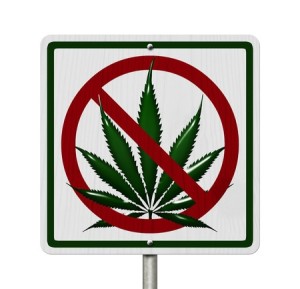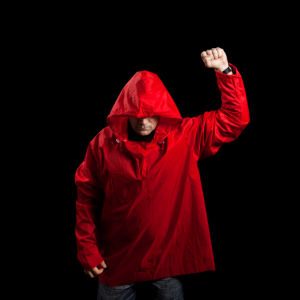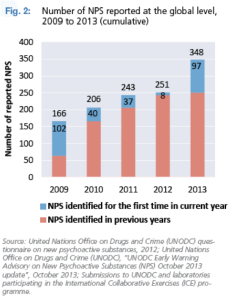Warning All Bakehead Drivers
“Our society is changing our views on marijuana, it’s becoming legalized in many states… young people have no fear of driving after smoking.” (Kal Mahli)
As I write this article, 23 states and the District of Columbia have laws legalizing marijuana in some form. Four states (Colorado, Washington, Alaska and Oregon) plus the District of Columbia have legalized recreational marijuana, the rest have passed medical marijuana laws for limited use of cannabis. Here is a map showing which states have legalized marijuana for medical and recreational purposes.
There’s been a prediction that the 2016 election year could be a “break-out” year for several states legalizing recreational marijuana. Phillip Smith of AlterNet suggested that seven states are likely candidates for that to happen: California, Nevada, Arizona, Maine, Massachusetts, Vermont, and Missouri. This growing legalization movement is also spurring on the development of the pot breathalyzer.
A company called Cannabix Technologies has received some recent media attention on its cutting-edge drug-impairment recognition system: the Cannabix Marijuana Breathalyzer. It is a patent pending device that will detect if an individual has used THC in last two hours. The device is currently in prototype development, and the company said in a February 2 news release that it hopes the prototype will be complete “in the coming weeks.” You can watch a video promo of the product here on YouTube.
The President and Director of Cannabix is Kal Malhi, a former member of the Royal Canadian Mounted Police (RCMP). He worked in the marijuana enforcement division for four of his ten years with the RCMP. Dr. Raj Attariwala, a Vancouver radiologist and nuclear medicine physician, is the Lead Engineer of the company. Malhi got the idea for the Cannabix breathalyzer while doing some reading while on a family trip to India. At an airport, he read about a Swedish study that used breath testing technology developed at Kerolinska University. The Swedish study showed how breath samples could be collected and sent to a lab for testing.
Malhi said the device functions like a blood glucose meter. “The breath sample is collected in one component and then is fed into a second part of the device, which tests the sample and gives an immediate result.” He said it could also be used in workplaces to carry out drug testing on employees. Product development is moving along quickly. Johnny Plankton at AfterPartyChat noted that Market Watch suggested that Cannabix Technologies could warrant a closer look by investors. He indicated that Mahli hopes to launch the device by the end of 2015.
Cannabix isn’t the only one attempting to develop a THC breathalyzer. Lifeloc Technologies, a Colorado-based company making breathalyzers, has been awarded a $250,000 grant from the Colorado Office of Economic Development to develop one. The CEO of Lifeloc, Barry Knott said that the company was in a race with itself to develop their own pot breathalyzer. “As far as we know there’s nobody else as far along in this.” They hoped to have the prototype by late 2015. Hey Barry, you may be behind Kal and Cannabix.
Researchers at Washington State University are also developing a breathalyzer for marijuana. Herbert Hill, a chemistry professor, is working with a research team from the university to develop the device. He told the Tacoma News Tribute: “We believe, at least initially, that it would lower the false positives that an officer would have. . . . They would have a higher level of confidence in making an arrest.” Lawmakers have expressed public support for the research. Hill and his team should be finished with their protoype by now and plan to test the device on human breath in 2015. Looks like there is at least a three-way race here.
But Adam Banner, a criminal defense lawyer with experience defending DUI cases, said he felt the marijuana breathalyzer may do more harm than good. Among his biggest concerns was the “zero tolerance” policy for drugged driving in some states like Oklahoma. Banner said that in these states a person could be charged with a DUI for having any detectable amount of THC in their system. He noted that in Washington State (as in Colorado) the current limit for driving under the influence of THC was 5 nanograms of active THC per milliliter of blood (5ng/ml).
Consequently, a person could be criminally charged for driving under the influence days or even weeks after he or she used marijuana–long after he or she was under any influence of the drug and when his or her driving would likely be unimpaired by the past drug use.
Banner seems to be misdirecting attention to a problem that doesn’t exist when he says: “In fact, in many states, the marijuana breathalyzer would ultimately put unimpaired drivers in jail instead.” He acknowledged that: “Drivers with a THC concentration greater than 5 ng/mL–the amount determined for DUID in Washington–have a significantly higher accident rate than drivers with no THC in their systems.” But his rhetoric gave an example of the hypothetical arrest of an individual returning to a zero tolerance state from a Colorado pot vacation who gets pulled over for a burned out tail light-and ends up arrested for DUID (driving under the influence of drugs) because he failed the breathalyzer—“despite being in no way impaired.”
Banner seems to have not read the information that indicates the THC breathalyzers are testing for the recent use of THC, sometime within the past two hours. He is right that a pot breathalyzer would increase the number of DUI arrests. But it doesn’t suggest that those arrests will be drivers posing no greater risk than teetotalers who never indulge. If marijuana legalization makes THC more likely to be in the bloodstream of individuals who drive, then the technology to accurately detect THC levels and research into their effect of driving will be done. As Banner said in the beginning of his article, he is all for finding ways to accurately indentify and eradicate impaired driving.
Or as Johnny Plankton succinctly put it: “Bakehead drivers, don’t say you weren’t warned.”




